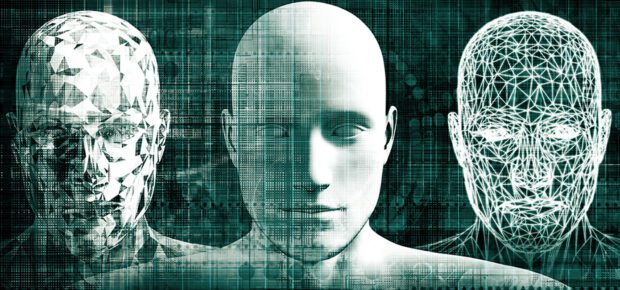August 3, 2023
Most of us believe that we’re capable of telling truth from fiction. The rise of deepfakes may make that much harder.
Deepfakes are digital content, including audio, video and still images, created by artificial intelligence (AI) to look and sound real. They often depict people doing and saying things they didn’t do or say. Increasingly, cybersecurity experts and technologists warn that this content could be used in a variety of malicious ways – including in fraud schemes or the spread of misinformation.
Identifying Risks
One area experts are warning about regarding the rise of deepfakes is the world of celebrities and in politics,
but attacks can also target individuals.
IEEE Member Rebecca Herold shares an anecdote that illustrates the risk of deepfakes.
“A friend of mine who was on a business trip received a call from his wife,” Herold said. “She was very upset, sobbing, telling him she was in an accident and didn’t have any money with her to pay for a tow truck. My friend almost believed her; she sounded just like his wife. But after he put her on hold after telling her that he was going to wire some money to the tow truck business, he first called his wife’s phone number. His wife was safe. He said he came pretty close to being scammed, the audio was quite good.”
How Many Fingers Am I Holding Up?
While deepfakes can be incredibly convincing, they often have subtle clues that they may not be real.
“At present, deepfakes aren’t completely indistinguishable from genuine videos but we’re edging closer,” said IEEE Member Yale Fox. “Most people can still identify a deepfake video.”
But as they get better, Herold urges consumers to be look for these “tells”
- AI is getting really great at creating facing-forward images of others. However, they still have problems with details like how people look from the side and back. Be sure to look at images at all angles. Deepfake photos and videos often put a lot more teeth into people’s mouths than what humans actually have. If someone is smiling or otherwise showing their teeth, look closely at them.
- Deepfake photos and videos also often give people too many, or too few, fingers. Count how many fingers are on the photo or video subject.
- Deepfakes also have a problem with profile and angled views of people. If you are communicating with someone via livestream video and you think it is a deepfake, ask them to look to the side or ask them a question that would cause them to turn their head such as “Hey, I like that painting behind you on the wall. Who is the artist?”
- Deepfake photos and videos often contain inconsistencies such as in lighting, reflections and shadows.
- Deepfake videos often contain quick, but unnatural-looking movements. For example, Look for unusual jerking motions or seemingly skips in time.
- Deepfake audios often have a tinge of, or occasional, unnatural or inconsistent audio qualities.
A Race for New Technology
The potential for deepfakes to create societal harm has sparked a wave of research into detection tools by both governments, universities and private industry.
Some techniques evaluate the suspicious content itself. For example, some tools might evaluate blood flow in a human face, look for unnatural blending or blurring. Or look in the reflection of a person’s eyes to see if it matches the surroundings as an indicator of authenticity. A comprehensive discussion hosted by the IEEE Signal Processing Society shows some of these techniques in practice.
Other tools might evaluate a file’s metadata for signs of manipulations.
“Similarly, threat actors generating deepfakes will likely learn from the detection algorithms and adjust their own technologies accordingly,” said IEEE Senior Member Kayne MGladrey. “ What’s essential here is that the primary distributors of video and audio content invest in deploying these solutions at scale to prevent the spread of misinformation or disinformation.”
Learn more: An article in a recent edition of IEEE Computer Magazine covers the topic of deepfakes comprehensively: from how fast they are growing, to potential detection algorithms. They even describe potential positive uses of deepfake technology. Check it out.





 Liquid Infrastructure: Our Planet's Most Precious Resource
Liquid Infrastructure: Our Planet's Most Precious Resource The Impact of Technology in 2025
The Impact of Technology in 2025 Quantum and AI: Safeguards or Threats to Cybersecurity?
Quantum and AI: Safeguards or Threats to Cybersecurity? Why AI Can't Live Without Us
Why AI Can't Live Without Us Bits, Bytes, Buildings and Bridges: Digital-Driven Infrastructure
Bits, Bytes, Buildings and Bridges: Digital-Driven Infrastructure Impact of Technology in 2024
Impact of Technology in 2024 Emerging AI Cybersecurity Challenges and Solutions
Emerging AI Cybersecurity Challenges and Solutions The Skies are Unlimited
The Skies are Unlimited Smart Cities 2030: How Tech is Reshaping Urbanscapes
Smart Cities 2030: How Tech is Reshaping Urbanscapes Impact of Technology 2023
Impact of Technology 2023 Cybersecurity for Life-Changing Innovations
Cybersecurity for Life-Changing Innovations Smarter Wearables Healthier Life
Smarter Wearables Healthier Life Infrastructure In Motion
Infrastructure In Motion The Impact of Tech in 2022 and Beyond
The Impact of Tech in 2022 and Beyond Cybersecurity, Technology and Protecting Our World
Cybersecurity, Technology and Protecting Our World How Technology Helps us Understand Our Health and Wellness
How Technology Helps us Understand Our Health and Wellness The Resilience of Humanity
The Resilience of Humanity Harnessing and Sustaining our Natural Resources
Harnessing and Sustaining our Natural Resources Creating Healthy Spaces Through Technology
Creating Healthy Spaces Through Technology Exceptional Infrastructure Challenges, Technology and Humanity
Exceptional Infrastructure Challenges, Technology and Humanity The Global Impact of IEEE's 802 Standards
The Global Impact of IEEE's 802 Standards Scenes of our Cyber Lives: The Security Threats and Technology Solutions Protecting Us
Scenes of our Cyber Lives: The Security Threats and Technology Solutions Protecting Us How Millennial Parents are Embracing Health and Wellness Technologies for Their Generation Alpha Kids
How Millennial Parents are Embracing Health and Wellness Technologies for Their Generation Alpha Kids Space Exploration, Technology and Our Lives
Space Exploration, Technology and Our Lives Global Innovation and the Environment
Global Innovation and the Environment How Technology, Privacy and Security are Changing Each Other (And Us)
How Technology, Privacy and Security are Changing Each Other (And Us) Find us in booth 31506, LVCC South Hall 3 and experience the Technology Moon Walk
Find us in booth 31506, LVCC South Hall 3 and experience the Technology Moon Walk Virtual and Mixed Reality
Virtual and Mixed Reality How Robots are Improving our Health
How Robots are Improving our Health IEEE Experts and the Robots They are Teaching
IEEE Experts and the Robots They are Teaching See how millennial parents around the world see AI impacting the lives of their tech-infused offspring
See how millennial parents around the world see AI impacting the lives of their tech-infused offspring Take the journey from farm to table and learn how IoT will help us reach the rising demand for food production
Take the journey from farm to table and learn how IoT will help us reach the rising demand for food production Watch technical experts discuss the latest cyber threats
Watch technical experts discuss the latest cyber threats Explore how researchers, teachers, explorers, healthcare and medical professionals use immersive technologies
Explore how researchers, teachers, explorers, healthcare and medical professionals use immersive technologies Follow the timeline to see how Generation AI will be impacted by technology
Follow the timeline to see how Generation AI will be impacted by technology Learn how your IoT data can be used by experiencing a day in a connected life
Learn how your IoT data can be used by experiencing a day in a connected life Listen to technical experts discuss the biggest security threats today
Listen to technical experts discuss the biggest security threats today See how tech has influenced and evolved with the Games
See how tech has influenced and evolved with the Games Enter our virtual home to explore the IoT (Internet of Things) technologies
Enter our virtual home to explore the IoT (Internet of Things) technologies Explore an interactive map showcasing exciting innovations in robotics
Explore an interactive map showcasing exciting innovations in robotics Interactively explore A.I. in recent Hollywood movies
Interactively explore A.I. in recent Hollywood movies Get immersed in technologies that will improve patients' lives
Get immersed in technologies that will improve patients' lives